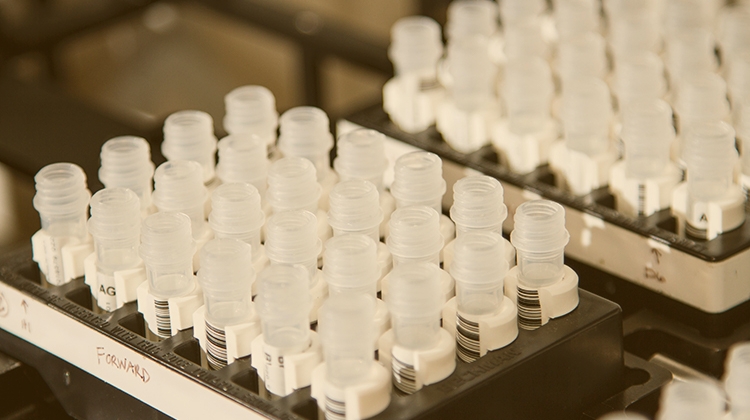First of all, this conference has been developed by the best possible program committee: the committee members have deep knowledge of the topics, are well connected, and come from big pharma, CDMOs, suppliers, and engineering companies. These experts have been working all year round to bring you the latest and greatest on everything Aseptic. No wonder that the committee has received the “Committee of the Year Award 2020” from ISPE. What an achievement. A big thank you to all involved, including our passionate ISPE staff!

Excludes current registrants. $400 Off In-Person/$250 Off Virtual only valid until 31 December 2021 for full industry member and nonmember rates only.
Building on the success of the conference in 2021, we have developed a program covering all the hot topics in Aseptic Processing: cell & gene therapy products, advanced therapeutic medicinal products (ATMPs), high potent processing, small scale and clinical manufacturing, barrier and isolator technology, single-use components, robotics in aseptic processing, Annex 1 revision and implementation strategies, and many more.
You will get answers to the following questions:
- How have the processes for cell-based therapies been developed and qualified?
- Which steps in aseptic processing and the adjacent production steps can be better performed by robots, and what have we learned in implementing them in classified environments?
- Can presterilized components like syringes be customized, and what does it take to do so?
- Is a platform-approach for single-use components like bags, tubings, and filters feasible to build a robust supply?
- How can the so-called Contamination Control Strategy from the draft Annex 1 be integrated into your quality system?
- Can robotic solutions be retrofitted to existing fill lines?
- What was so special about developing and qualifying the processes for the vaccines against coronavirus?
- Can high-potent and standard products be manufactured in shared facilities, and what precautions must be taken?
- What were the considerations and learnings to retrofit restricted access barrier systems (RABS) to conventional fill lines, and which compromises need to be made? How did the authorities view such projects?
- Enzyme-indicators have been used for a while for determination of hydrogen peroxide. Where can they substitute bacterial spore-strips?
The conference speakers come from around the world and provide unique, multi-faceted perspectives on the topics. In real-life case studies, they will share their learnings with solutions that you can apply to your challenges immediately.
In addition to the topical tracks, there will also be workshop-type discussion groups where you can directly interact with your fellow participants and ask your questions in an open forum. This section of the program brings the most actionable learnings and has been described as one of the highlights of the conference.
But wait, there is even more:
We have organized a distinguished industry panel to discuss the challenges and solutions of cell & gene therapy processes. The product in most of these therapies are live-cells, often autologous - meaning that there is one batch for one patient – this raises several questions about developing, qualifying, and operating such production units. You will find answers to these questions during this session.
In terms of keynotes, as in past years, this conference has a top line-up of speakers:
Paul Gustafson from Health Canada (Senior Corporate Regulatory Compliance and Enforcement Advisor/Regulatory Operations and Enforcement Branch (ROEB)) and incoming chair of the Pharmaceutical Inspection Co-operation Scheme (PIC/S) will tell us about the efforts of international regulatory harmonization.
Alonza Cruze, Director, Office of Pharmaceutical Quality Operations, Office of Regulatory Affairs, FDA has agreed to give an FDA perspective on the learnings with remote assessments and inspections during the pandemic.
Joyce Hansen, Vice President, Sterility Assurance, Johnson & Johnson, returns with an interesting talk on sterility assurance and how to cultivate future leaders in the pharmaceutical industry.
Additionally, the ISPE Aseptic Conference is one of the very few events with an open panel discussion with regulators from FDA and other agencies. This open forum enables you to directly address your questions to the panelists in a larger group. We expect our regulatory keynote speakers, Paul Gustafson and Alonza Cruze, to be joined by Rick Friedman, Deputy Director, Science and Regulatory Policy, Office of Manufacturing and Product Quality, FDA’s Center for Drug Evaluation and Research and Robert Sausville, Director, Division of Case Management Office of Compliance and Biologics Quality, FDA’s Center for Biologics Evaluation and Research and others. Both industry and regulators have profited from this exchange in the past, gaining a better understanding of seemingly contradictory positions.
Above all, the conference provides ample opportunities to network with your peers, learn about new products in the exhibit hall, and socialize over a beverage or two.
If there is one conference in the field of Aseptic Processing that you cannot afford to miss, then this is the one. We hope to see you in person in Bethesda, MD in March!
Learn More









